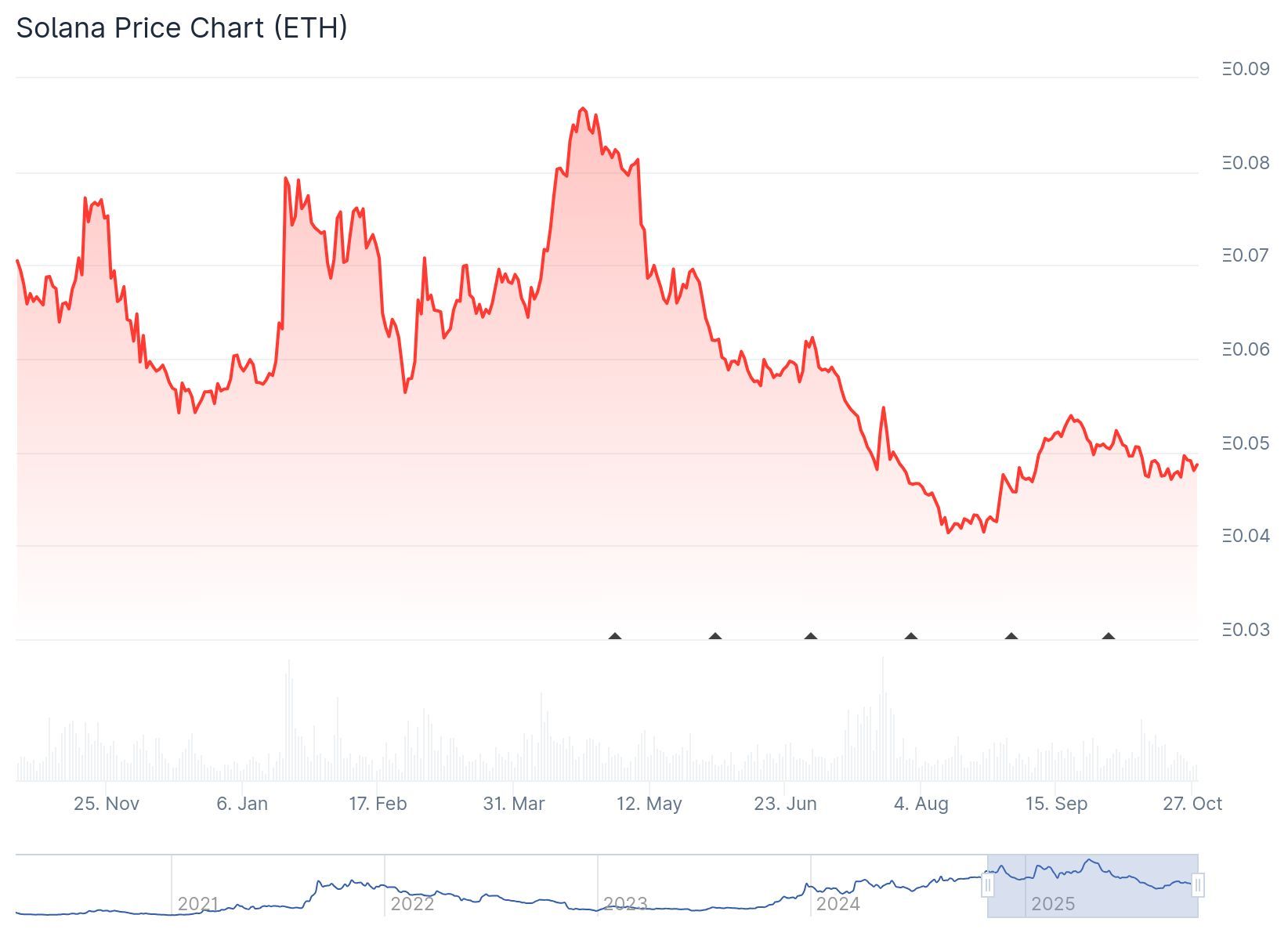Buterin and Yakovenko Clash Over Ethereum Layer-2 Security
Ethereum co-founder Vitalik Buterin and Solana co-founder Anatoly Yakovenko have presented conflicting views on the security of Ethereum’s layer-2 networks.
This has sparked debate within the crypto industry over whether L2 solutions truly inherit robust security from Ethereum’s base layer.
Buterin Defends L2 Security Model
Buterin emphasizes that Ethereum layer-2 solutions maintain strong security against 51% attacks. They inherit finality guarantees from the base layer. In a recent post on X, he stated: “A key property of a blockchain is that even a 51% attack cannot make an invalid block valid. This means even 51% of validators colluding (or hit by a software bug) cannot steal your assets.”
However, Buterin acknowledged limitations when validator sets are trusted beyond chain-controlled functions.
“This property does not carry over if you start trusting your validator set to do other things, that the chain does not have control over,” he added. “At that point, 51% of validators can collude and give a wrong answer, and you don’t have any recourse.”
Regular reminder:
— vitalik.eth (@VitalikButerin) October 26, 2025
A key property of a blockchain is that even a 51% attack *cannot make an invalid block valid*. This means even 51% of validators colluding (or hit by a software bug) cannot steal your assets.
However, this property does not carry over if you start trusting…
Major L2 networks, including Arbitrum, Base, Optimism, and Worldchain, collectively hold over $35 billion in locked value. They rely on Ethereum’s security architecture. The Ethereum validator set currently exceeds one million active participants, significantly outnumbering Solana’s approximately 2,000 validators. Proponents argue this bolsters resistance to coordinated attacks.
Yakovenko Questions L2 Security Assumptions
Yakovenko directly challenged Buterin’s assertions.
“The claim that L2s inherit eth security is erroneous. 5 years into the L2 roadmap, wormhole eth on solana has the same worst case risks as eth on base and generates as much revenue for eth L1 stakers,” he stated on X(Twitter).
The claim that L2s inherit eth security is erroneous. 5 years into the L2 roadmap, wormhole eth on solana has the same worst case risks as eth on base and generates as much revenue for eth L1 stakers. It’s wrong no matter how you slice it.
— toly 🇺🇸 (@aeyakovenko) October 26, 2025
The Solana co-founder questioned whether technical limitations prevent L2s from achieving desired security properties.
“Yes there is something fundamental about L2s that makes it difficult to actually achieve the desired security. That’s why it hasn’t happened in 5 years. Or are you suggesting that all the L2 teams are lazy or dumb?” Yakovenko wrote.
Yes there is something fundamental about L2s that makes it difficult to actually achieve the desired security. That’s why it hasn’t happened in 5 years. Or are you suggesting that all the L2 teams are lazy or dumb? https://t.co/eGAQB84NP0
— toly 🇺🇸 (@aeyakovenko) October 26, 2025
He identifies three primary concerns with current L2 implementations. First, L2 networks expose vast attack surfaces with complex code bases, which prove difficult to audit comprehensively. Second, multi-signature custody arrangements allow funds to be moved without user consent. This occurs if signers collude or face compromise. Third, off-chain processing mechanisms centralize control, contradicting blockchain’s core decentralization principles.
Yakovenko has proposed developing a specialized bridge that positions Ethereum as a layer-2 for Solana. This aims to facilitate seamless asset transfers between ecosystems while addressing security concerns.
Proliferation Raises Ecosystem Concerns
The Ethereum layer-2 landscape has expanded significantly. L2Beat reports 129 verified networks alongside 29 additional unverified ones. This proliferation has generated debate over whether it fosters innovation or creates inefficiencies.
CoinGecko data shows that in the first half of 2025, Ethereum declined 25.0% while Solana dropped 19.1%. However, Solana outperformed Ethereum by 26.2% in January before both assets faced broader market pressure.

This reflects shifting market sentiment. Industry observers note that as layer-2 networks evolve, initiatives like data availability sampling and shared sequencing aim to mitigate centralization risks. The debate underscores ongoing challenges in balancing security with scalability.
Disclaimer: The content of this article solely reflects the author's opinion and does not represent the platform in any capacity. This article is not intended to serve as a reference for making investment decisions.
You may also like
XRP’s Dip Volume Drama and Solana’s EMA Struggle: Shakeout or Sneaky Rebound?

2025: The Most Bizarre Crypto Cycle in History—Manipulation, Collapse, and the Rebirth of a New Order

4E: Declining Bitcoin illiquidity supply may suppress price rebound
Pieverse to launch x402b protocol, supporting BNB Chain gas-free payments and compliant receipts
